Any photo I come across from my native city of Stepanavan on social networks does not leave me indifferent. Stepanavan, and in general, Lori, is often captured by photographers due to its attractive nature. But this time the photo I came across was from a different “perspective”. It told about the building of the Stepanavan shopping center, which remained from the Soviet Union.
The author of this photograph of the building, typical of Soviet architecture, is Italian photographer Stefano Perego. Apart from being a photo of Stepanavan, it also captured my journalistic interest, and the interview with the photographer didn't take long to come.
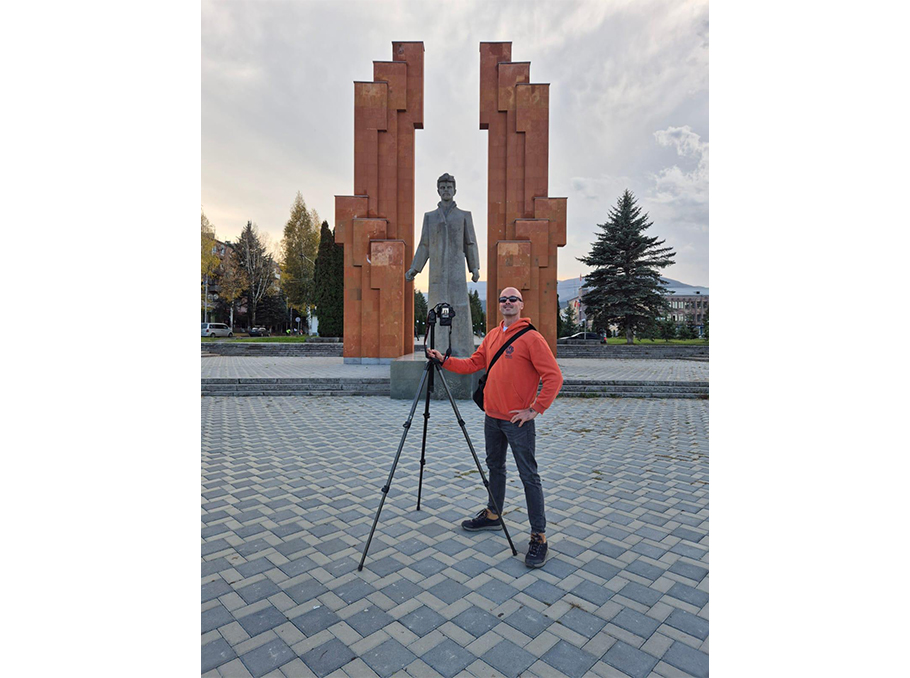 Stefano Perego in Stepanavan
Stefano Perego in StepanavanStefano is an architectural photographer who documents fascinating and little-known buildings from all over the world. His photographic tour has brought him to Armenia more than once.
In an interview with Mediamax, the Italian photographer shared about the inspiration for buying his first camera, the unusual beauty of Soviet architecture, and falling in love with Armenia at first sight.
“That moment inspired me to buy my first camera”
My journey in photography began in 2006, sparked by the sight of a massive abandoned factory in an industrial area near my home. I ventured inside, driven by a desire to explore its interior. What I discovered left me awestruck: vast empty spaces, towering columns that resembled a steel cathedral, and mesmerizing perspectives and geometries.
The stillness of the scene, accented by the muted tones and the rhythmic drip of melting snow forming reflective water surfaces, evoked an overwhelming sense of inspiration - something I had never felt before. That moment prompted me to purchase my first camera, return to that factory, and capture the emotions and imagery that had so deeply moved me.
This marked the beginning of my career as a photographer. Following that initial exploration, I photographed numerous abandoned buildings of various types, starting in Italy and later expanding across Europe. Along the way, I developed a profound interest in the architectural styles of the latter half of the 20th century.
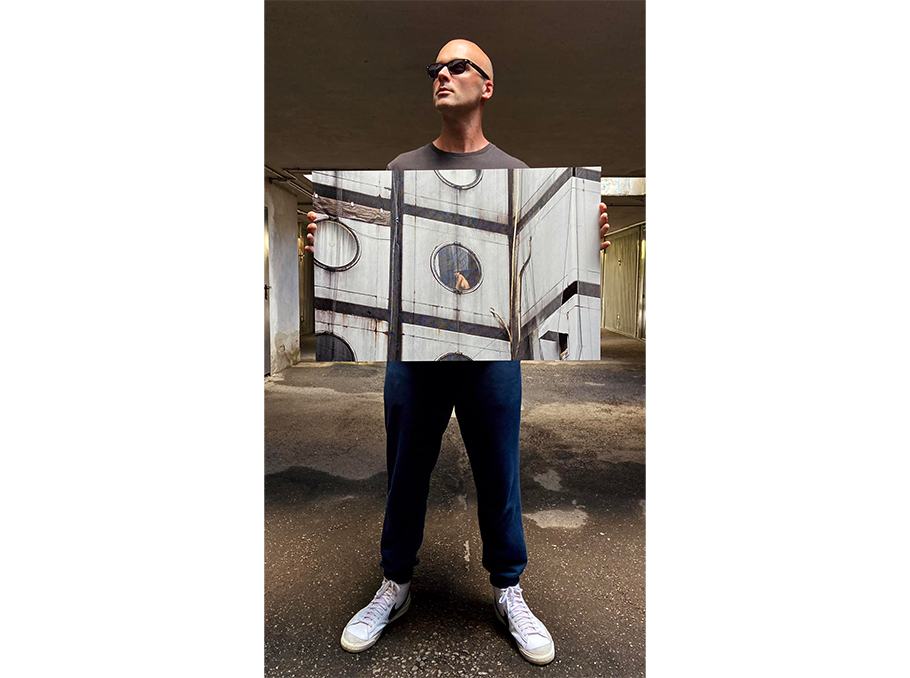 Stefano Perego
Stefano PeregoAn essential moment came during a trip to document abandoned structures in the countries of the former Yugoslavia. There, I was captivated by the striking raw concrete buildings and monuments scattered throughout the region. This discovery profoundly influenced my photography, shaping the direction of my work from that point onward.
“When they find out I’m Italian, they start singing”
First and foremost, it’s the striking appearance of Soviet Modernist buildings that draws me in. Whether you admire them or not, their unconventional beauty and powerful visual impact are impossible to ignore. These structures speak volumes about the era they represent and its artistic significance, reflecting the vision of modernity held by countries that, in some cases, no longer exist, like the Soviet Union. Their futuristic forms contrast sharply with the present-day context, while their often weathered and untouched facades give the impression of being frozen in time. It’s this fascinating interplay of past, present, and future that I find so compelling to capture through photography.
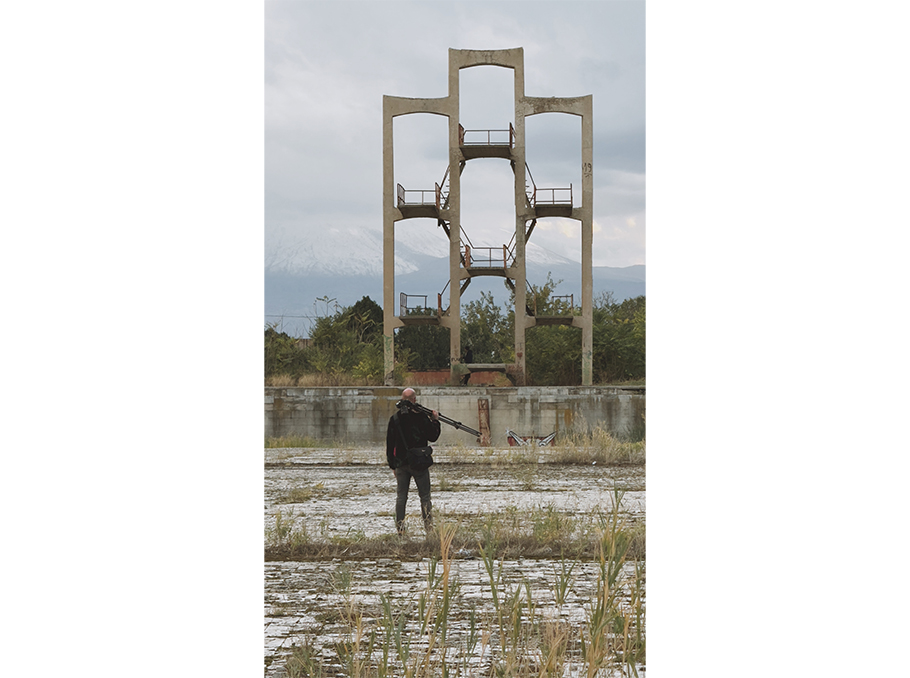 Stefano Perego in Echmiadzin
Stefano Perego in EchmiadzinMy perspective on architecture is constantly evolving. I haven’t formally studied architecture or photography - I’m a self-taught photographer. My approach is driven entirely by passion and curiosity, allowing me to continuously discover and learn as I conduct research, travel, and explore.
I don’t encounter many specific challenges when photographing this type of architecture. The only occasional hurdle is when security guards approach me with a serious expression, questioning what I’m doing. However, after a bit of explanation, they usually realize I’m harmless. And once they find out I’m Italian, we often end up singing Toto Cutugno together, turning the encounter into a lighthearted moment that ends with smiles all around (laughs-ed.).
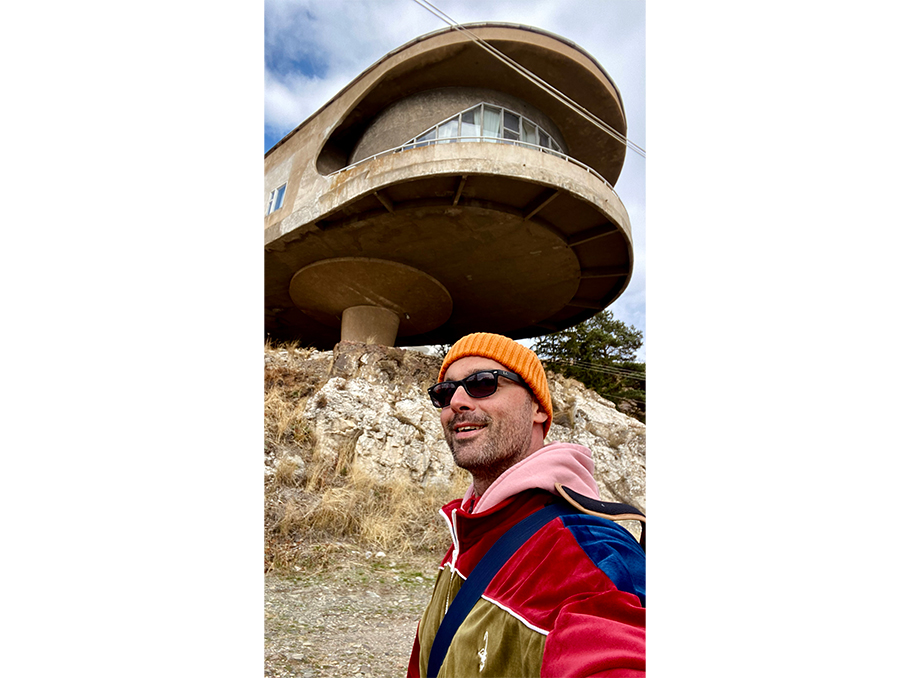 Stefano Perego in Sevan Canteen of the House of Recreation for Writers of Armenia, by architect Gevorg Kochar, (1965-1969)
Stefano Perego in Sevan Canteen of the House of Recreation for Writers of Armenia, by architect Gevorg Kochar, (1965-1969) Since 2022, I’ve been organizing tours focused on Brutalist architecture, Soviet modernism, monumental art. These tours are designed for architecture and photography enthusiasts. I organize these tours in partnership with Gost Tours, a travel company led by experienced guides and historians.
“Armenia was a real discovery, love at first sight”
As my passion for the architectural styles of the late 20th century - especially Brutalism and Soviet Modernism - deepened, it felt like a natural and almost inevitable calling to explore Eastern Europe. This journey carried me to Armenia in the spring of 2016. This trip was my first adventure solely dedicated to capturing Soviet modernist buildings and memorials. It was a complete revelation: love at first sight! I was struck by the abundance of Soviet-era structures still standing, their unconventional beauty, the captivating mosaics and reliefs adorning their facades, and the prominent use of local tuff stone. All of this was surrounded by stunning landscapes and plenty of fascinating Soviet-era cars.
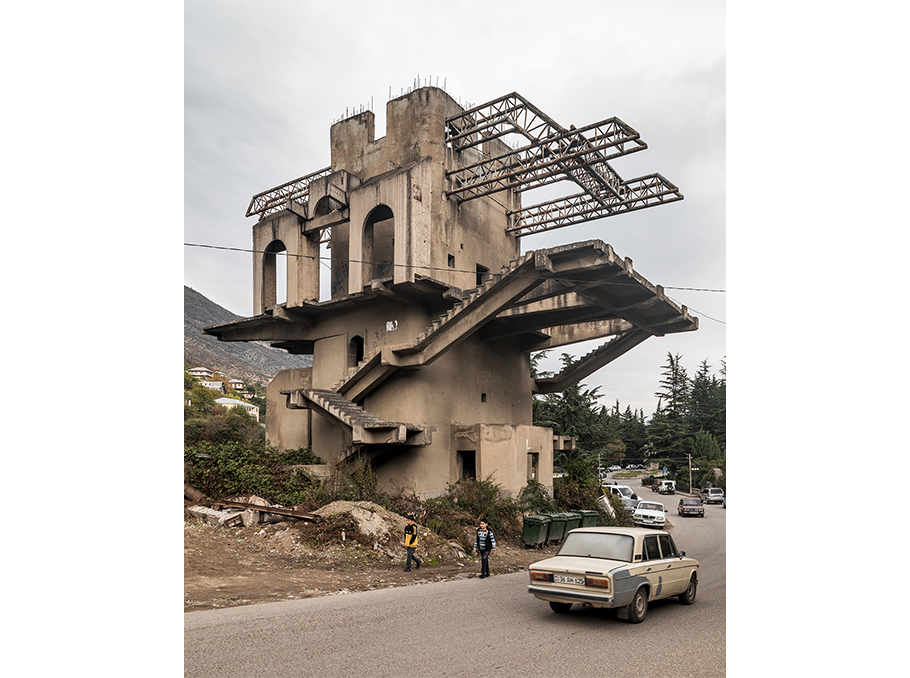 Unfinished cable car station, built in the 1980s. Ijevan
Unfinished cable car station, built in the 1980s. IjevanPhoto: Stefano Perego
Soviet modernist architecture in Armenia is unique, blending local heritage, vernacular and medieval art forms, with the bold visions of modernity and the future from the 1960s to the 1980s.
I conduct thorough, in-depth research to uncover detailed information about buildings, drawing from a wide range of sources. These include websites, historical articles, publications (often in their original language), social media comments, conversations with locals whenever possible, and even direct communication with architects and historians.
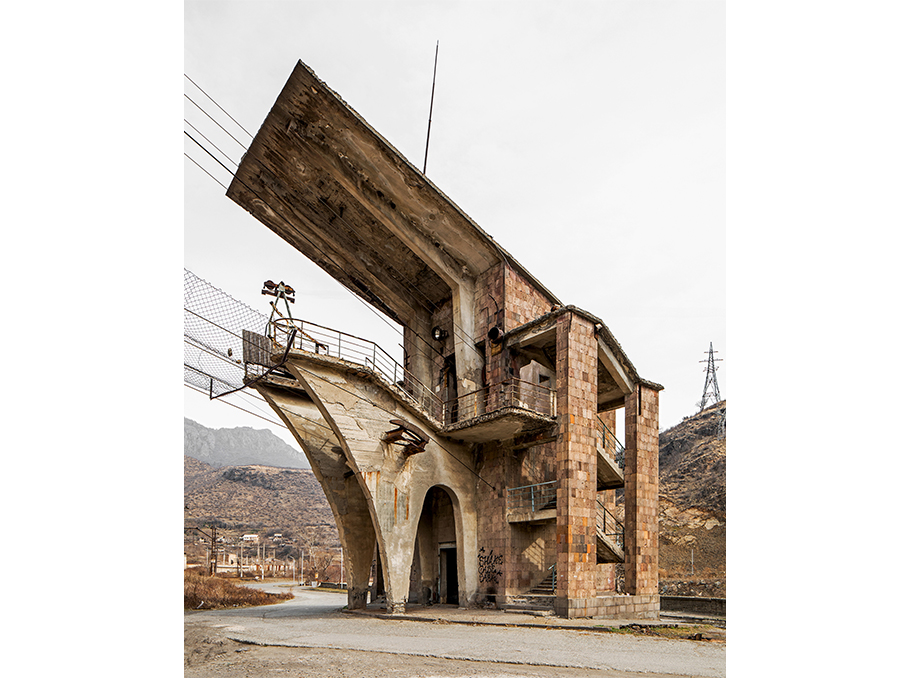 Bus station, by architect Henrik Arakelyan, 1976-1978. Hrazdan, Armenia
Bus station, by architect Henrik Arakelyan, 1976-1978. Hrazdan, ArmeniaPhoto: Stefano Perego
Photography plays a crucial role in raising awareness about Soviet modernist architecture. In Armenia, these buildings were designed and constructed by Armenian architects and engineers, with Armenian artists contributing to their decoration. As such, they deserve preservation, as they represent a period of immense creativity and experimentation, offering insight into an era and its artistic significance.
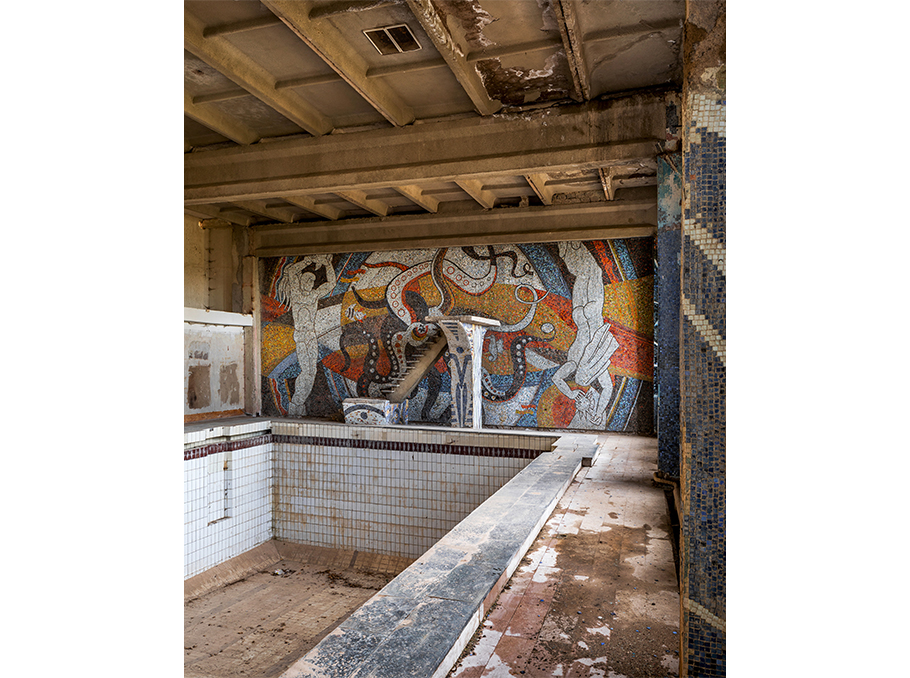 Swimming pool inside Fairy Tale Pioneer Camp, built in 1975. Spitak
Swimming pool inside Fairy Tale Pioneer Camp, built in 1975. SpitakPhoto: Stefano Perego
These structures are gradually disappearing or undergoing significant alterations, making photographs vital documents that help preserve their memory for future generations.
“I will soon visit Armenia for the eighth time”
I’ve visited a number of Armenian towns, many of them several times: Alaverdi, Stepanavan, Vanadzor, Dilijan, Ijevan, Spitak, Gyumri, Echmiadzin, Ashtarak, Byurakan, Yerevan, Charentsavan, Hrazdan, Sevan and much more. Choosing a favorite spot in Armenia is no easy task, because each location captivates me in its own way. But if I must choose, the regions of Lori and Shirak stand out as truly unforgettable. There is one road, in particular, that stirs my soul: the route from Ashtarak to Spitak. It winds through majestic landscapes, with the massive Mount Aragats in the distance, small villages nestled along its course, nostalgic scenes that evoke a deep sense of history, and powerful memorials that leave a lasting impression. Each time I travel this route, it fills my heart with awe and wonder.
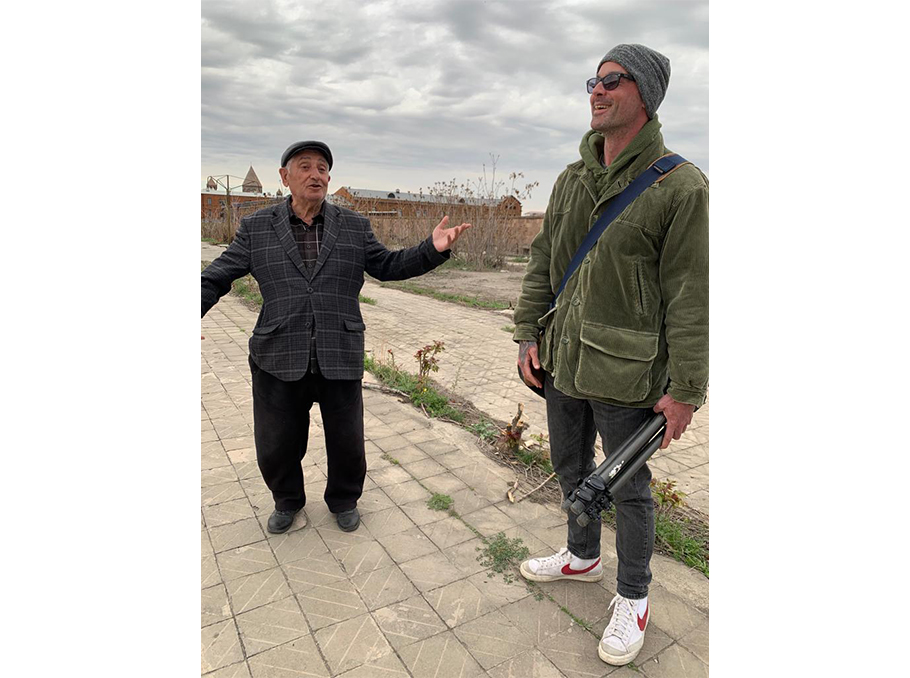
Beyond the buildings, I met a lot of warm-hearted, curious locals, eager to offer help and make me feel welcome. From the streets, they would shout greetings as they passed by, curious about what I was doing with my camera and tripod. Many were surprised to see me photographing structures that, at the time, only a handful of foreign visitors seemed to care about.
Every moment of my travels in Armenia is unforgettable, making each trip uniquely special. One experience that stands out happened during my first visit to Armenia in 2016. While photographing various places, shopkeepers repeatedly came out to greet me, offering snacks and drinks free of charge. After about the tenth time, I finally asked one of them, “Why are you giving me these?” His response was deeply moving: “Because we are honored and proud that you are here taking photos in our country.” That moment touched me profoundly and it tells a lot about the warmth, kindness, and generosity of the Armenian people.
Very soon I will come again to Armenia, it will be my eighth visit, starting from the first one in 2016. I will come to lead an architecture photography tour and to go on with my project of documentation of interesting structures designed and built between the 1960s and the 1980s.
Traveling in Armenia had a profound impact on my work. Armenia is the main reason why I decided to become an architecture photographer and to focus on Soviet modernist aesthetics and on buildings built during that period of time in other countries of the world.
Arpi Jilavyan








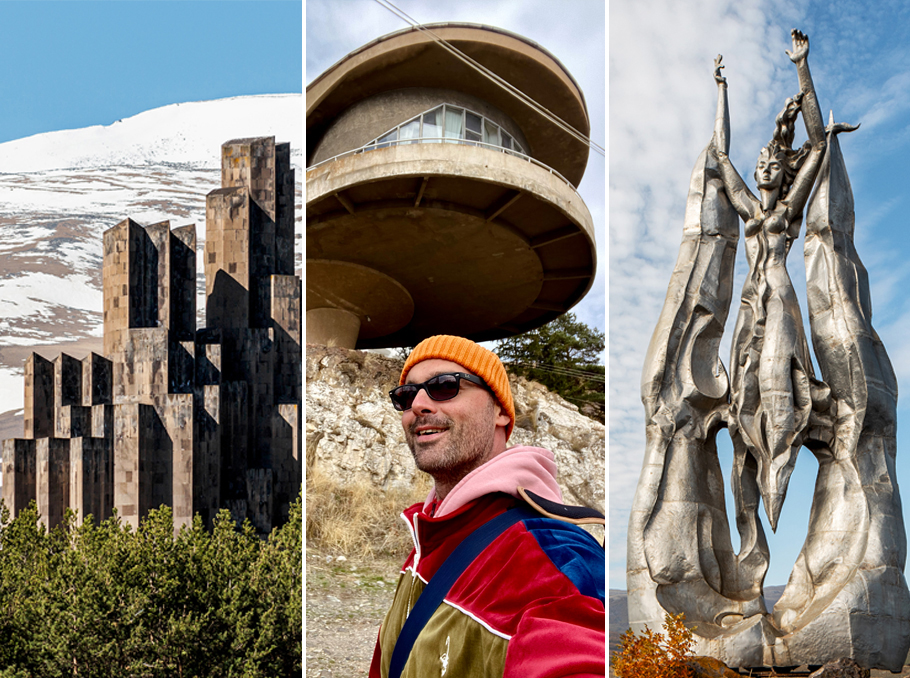







Comments
Dear visitors, You can place your opinion on the material using your Facebook account. Please, be polite and follow our simple rules: you are not allowed to make off - topic comments, place advertisements, use abusive and filthy language. The editorial staff reserves the right to moderate and delete comments in case of breach of the rules.